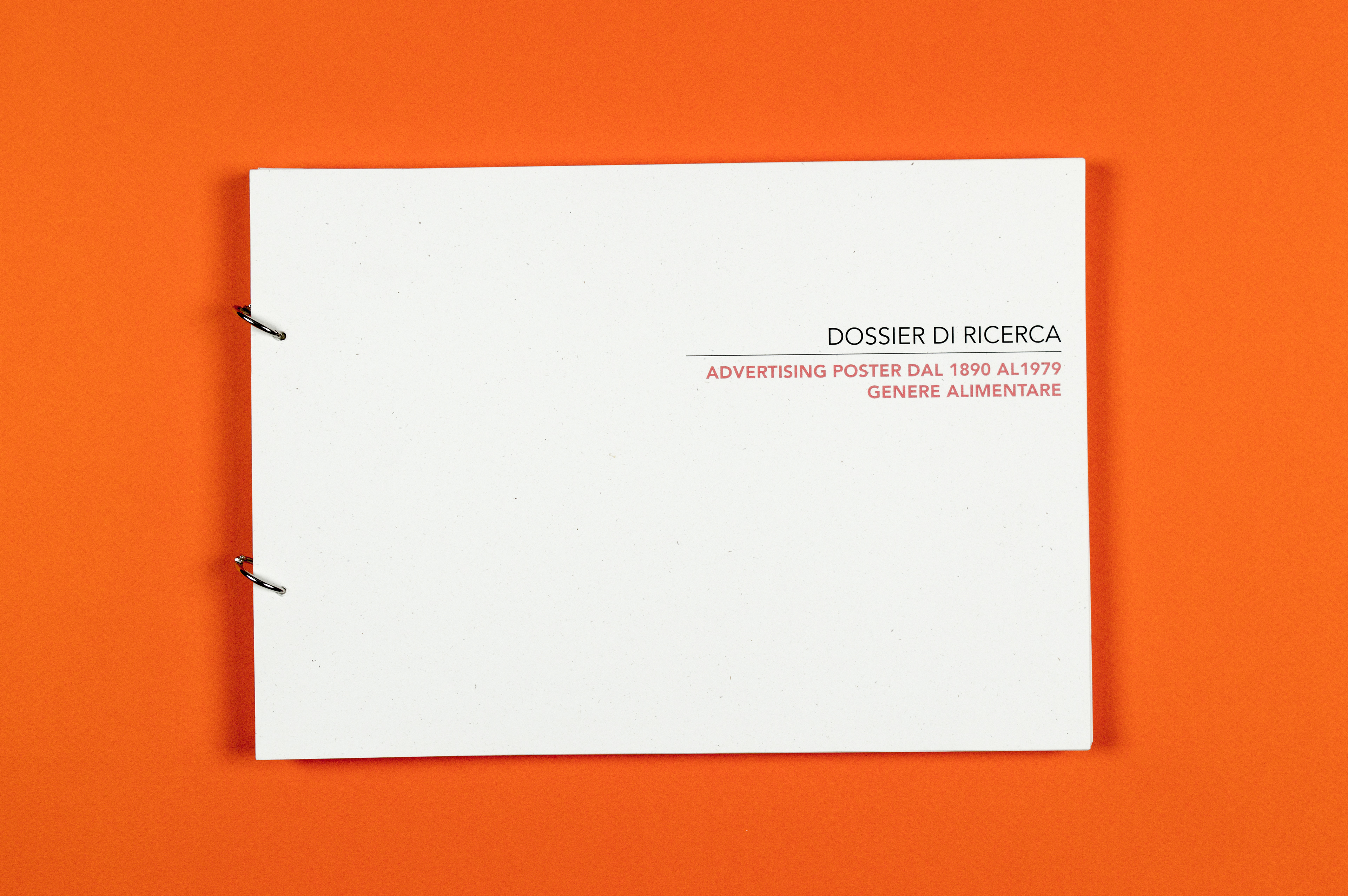
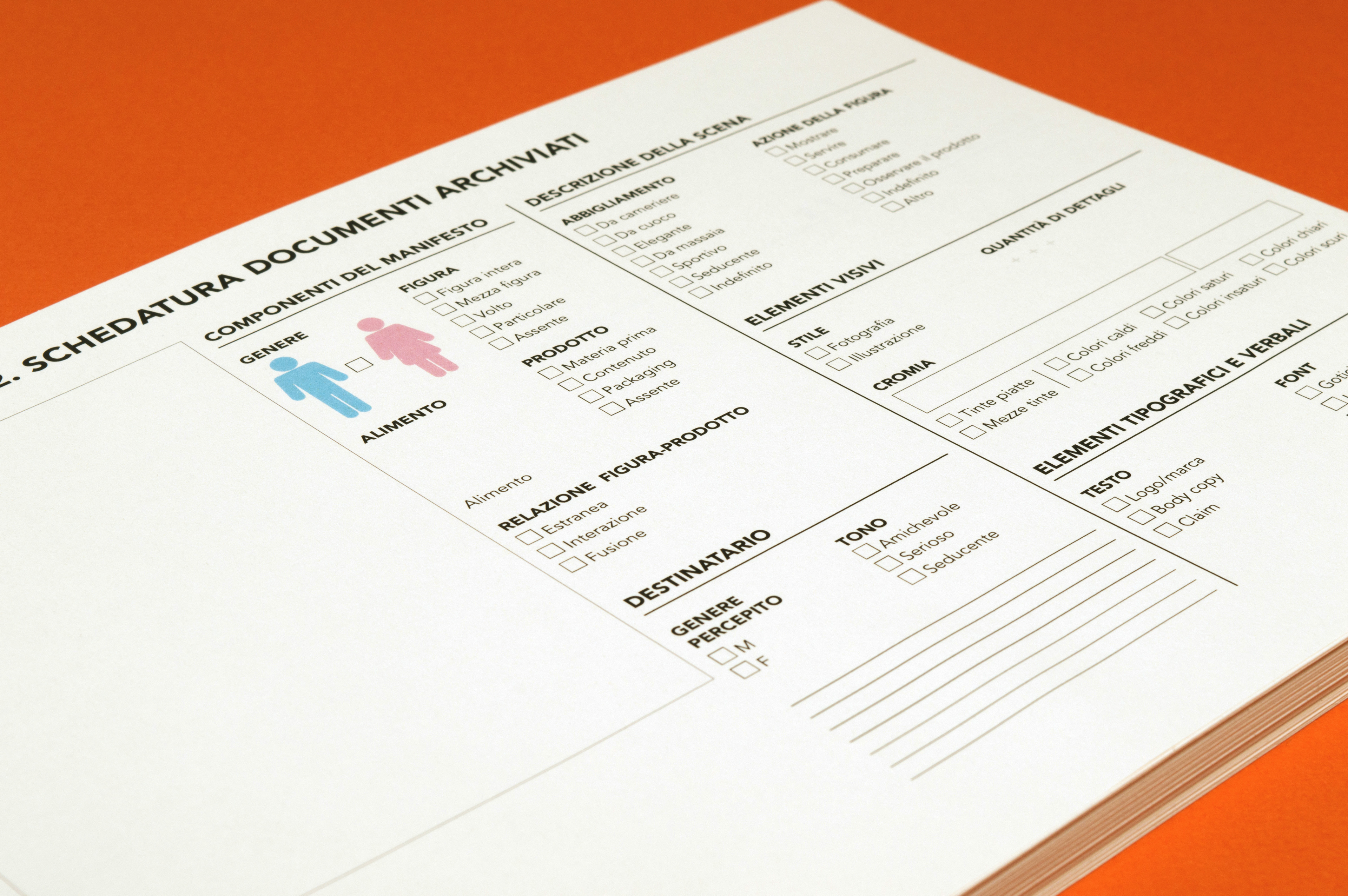
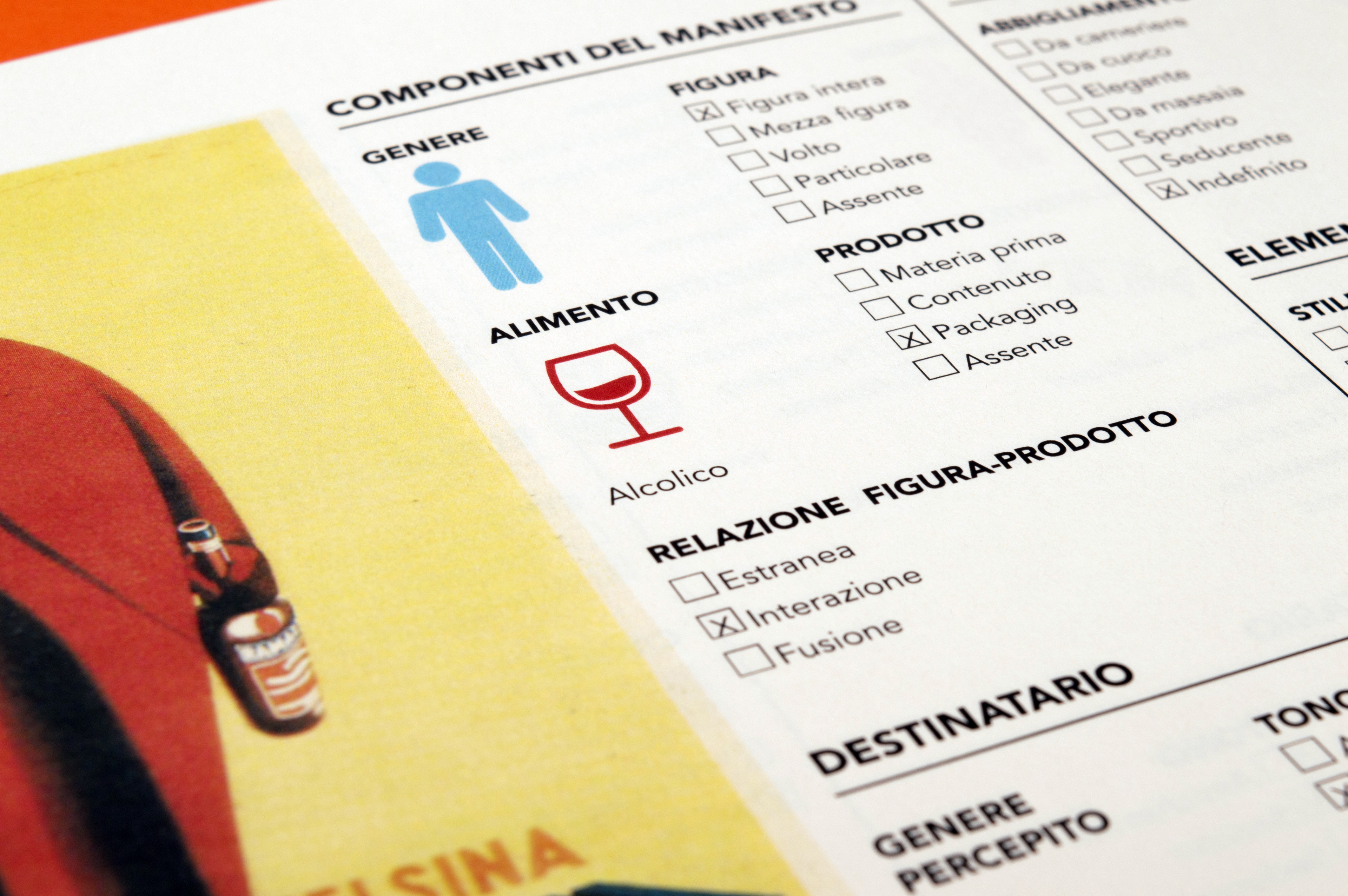
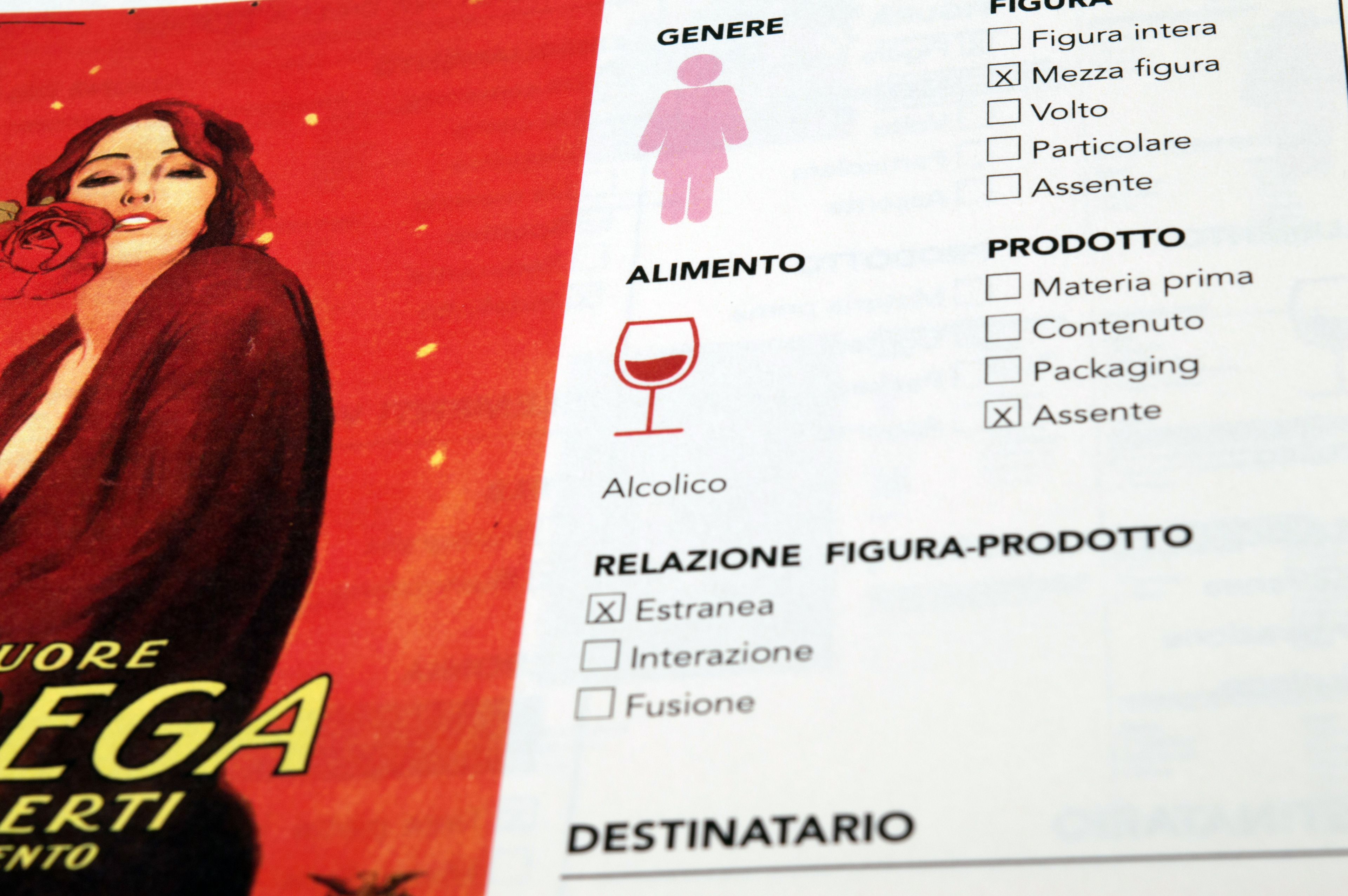
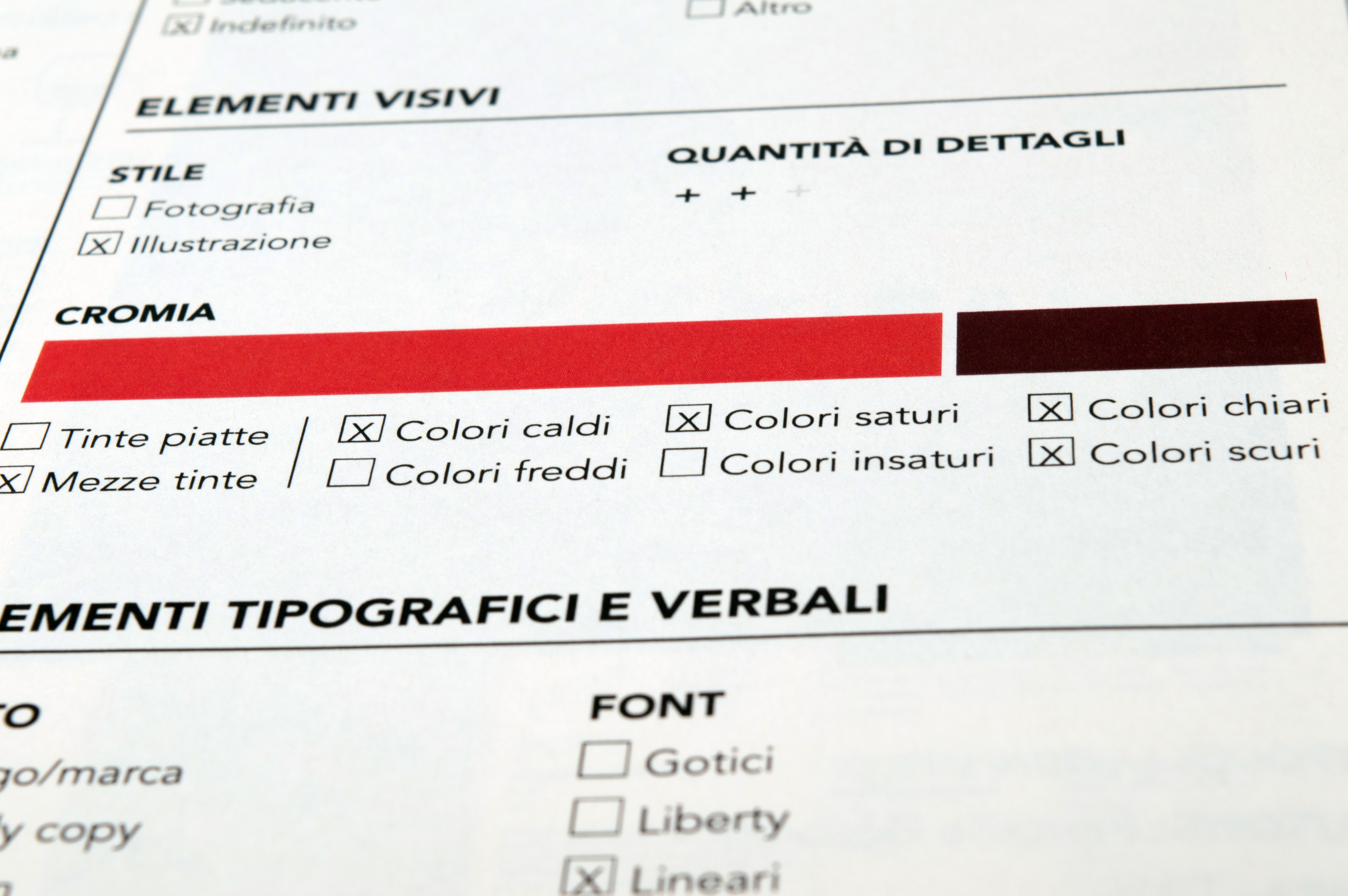
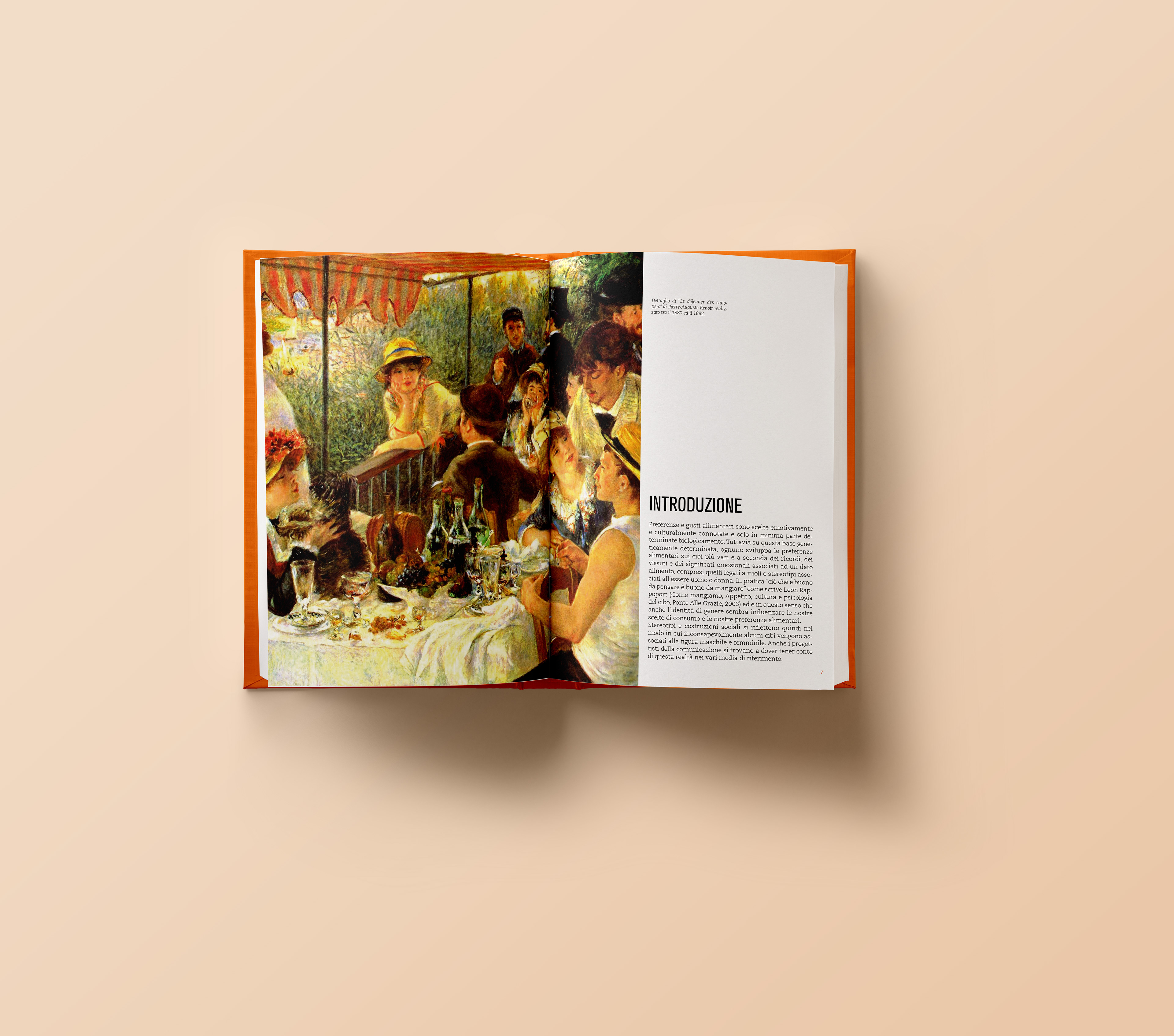

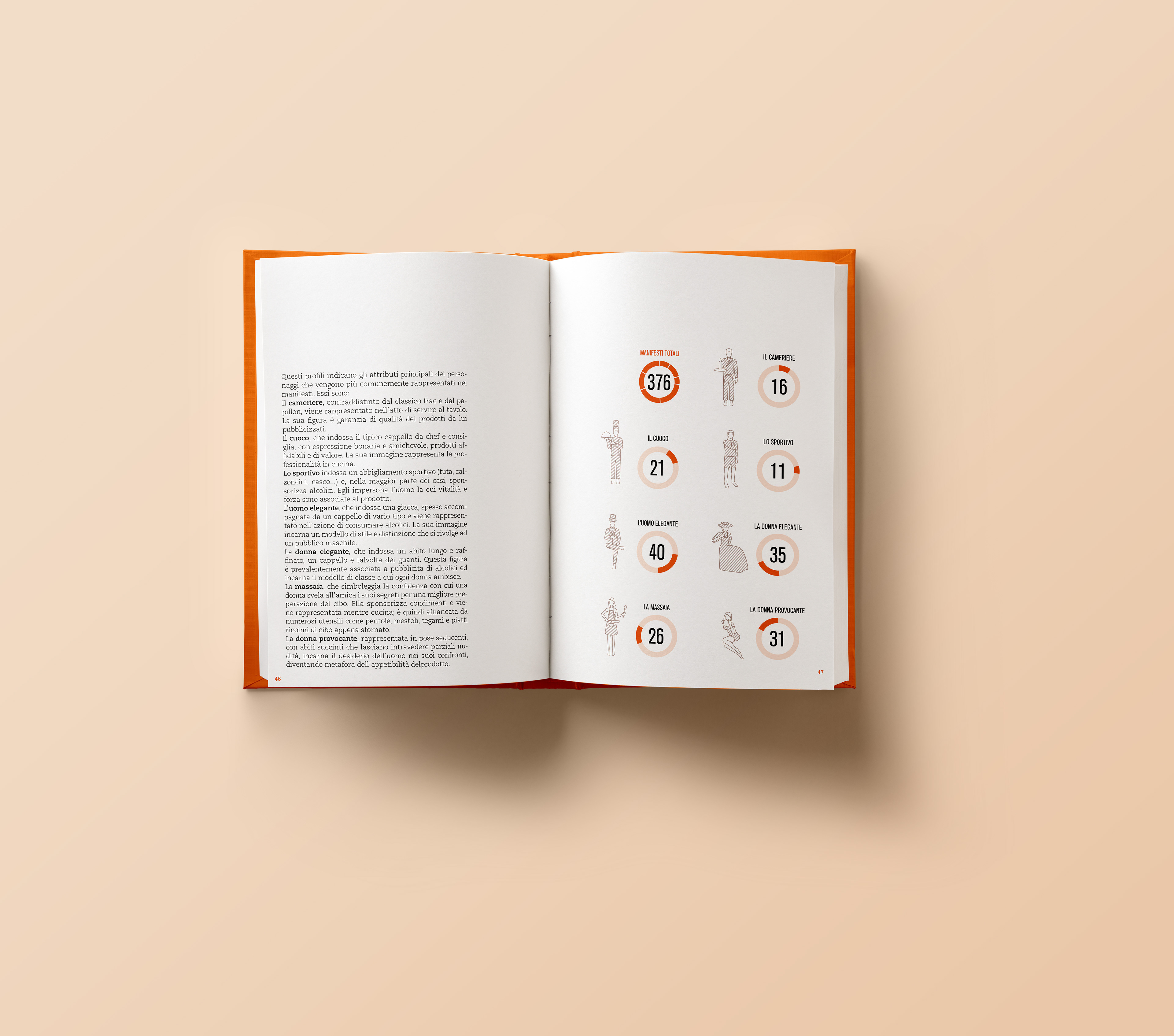
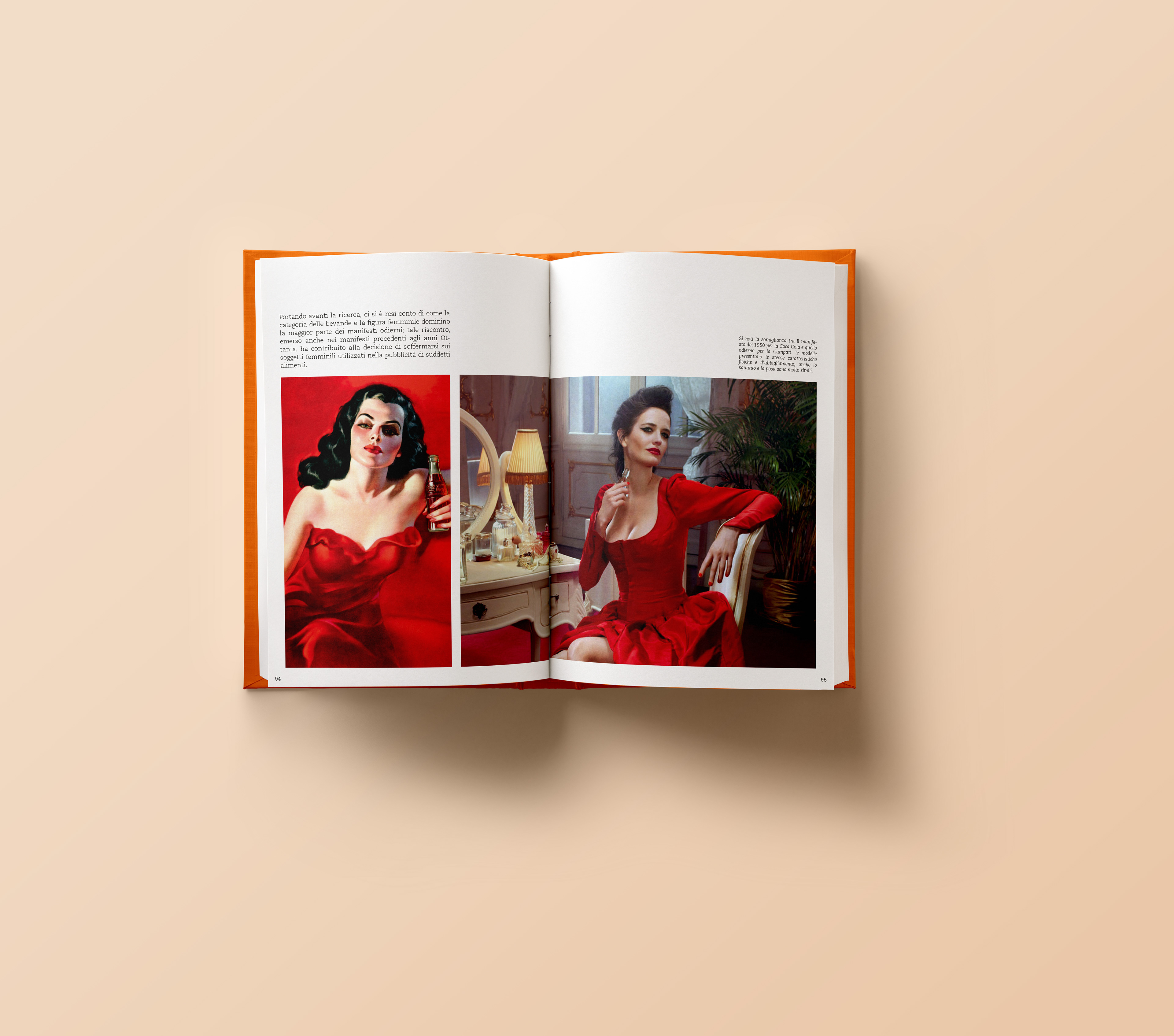
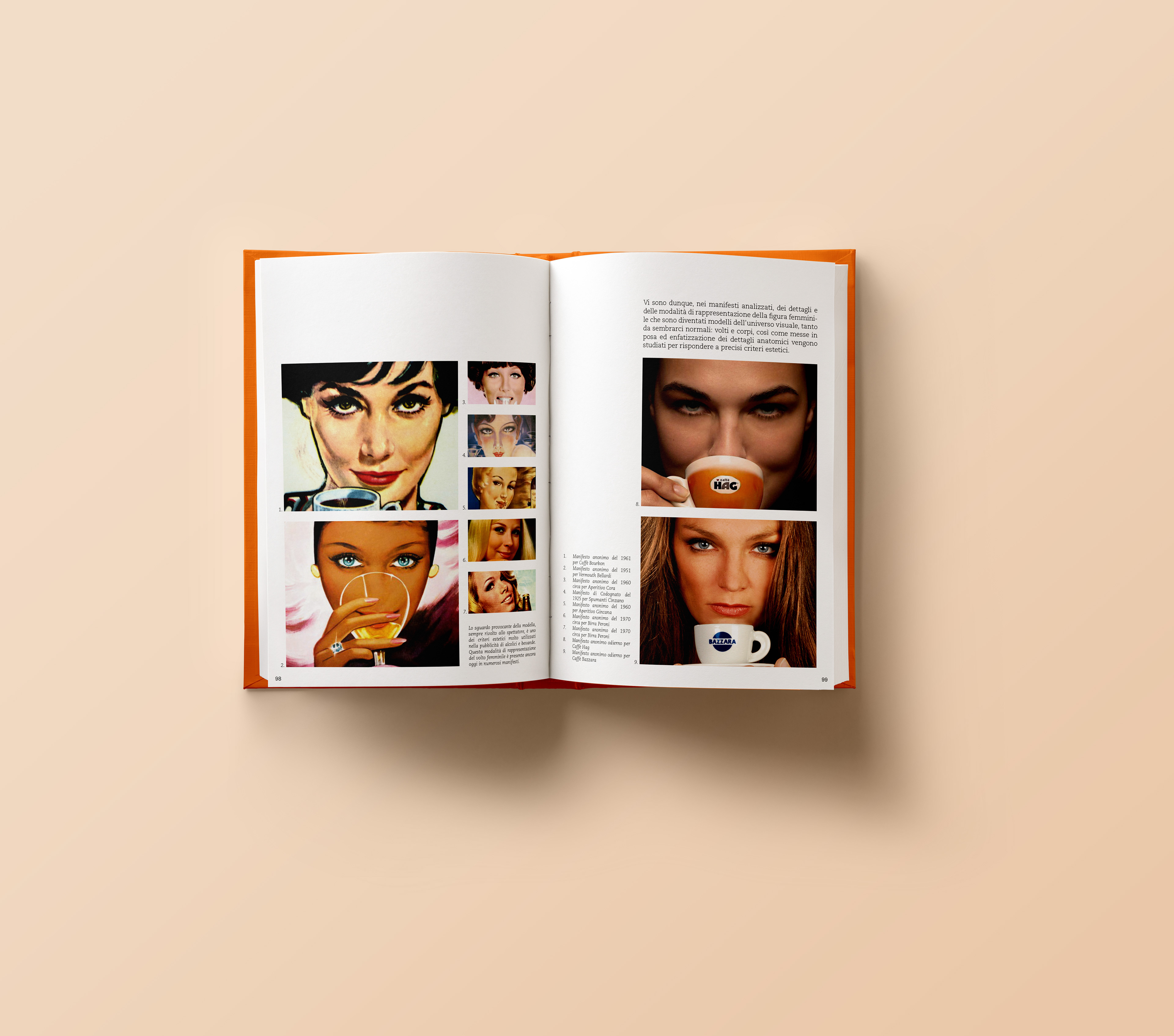
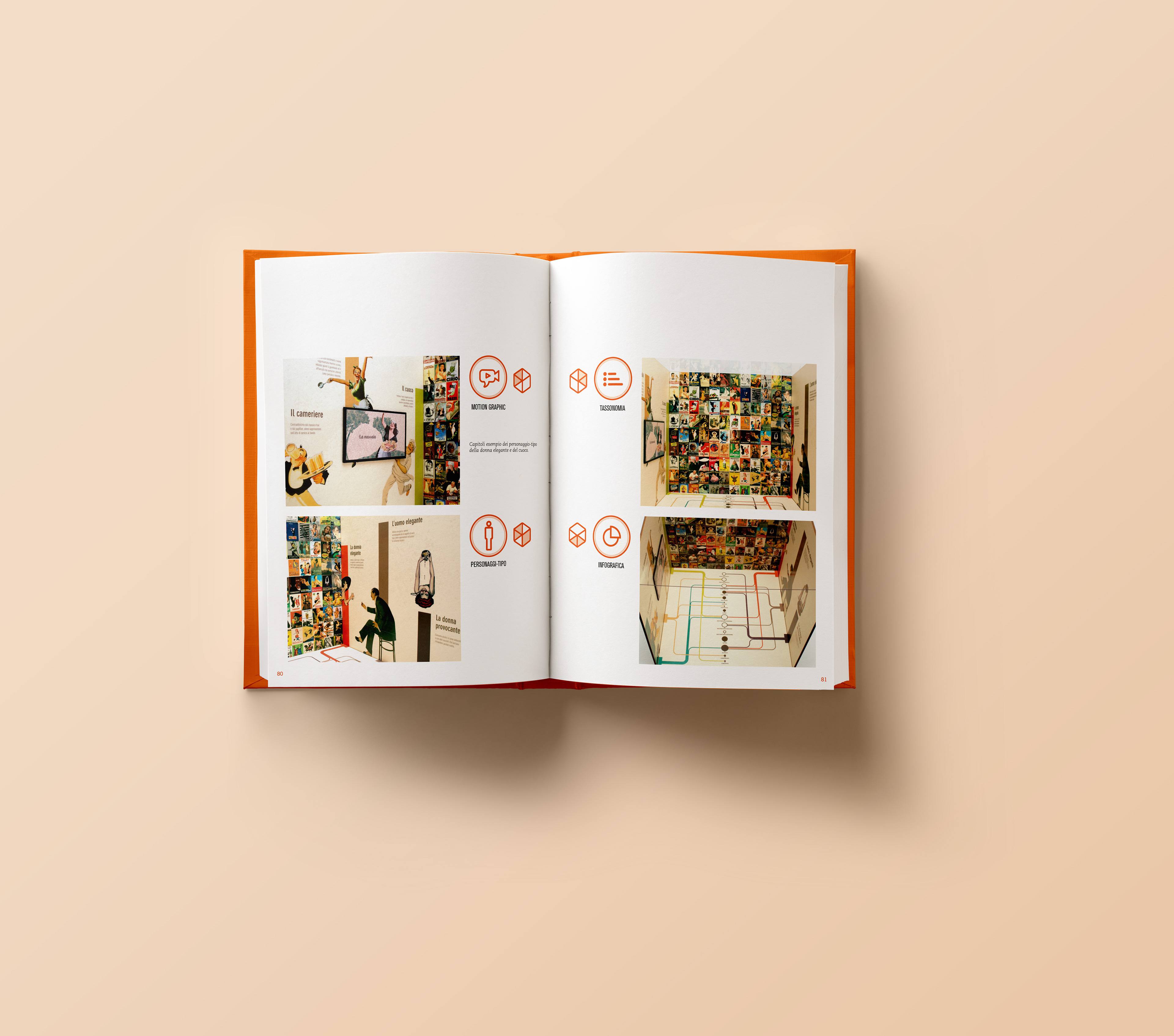
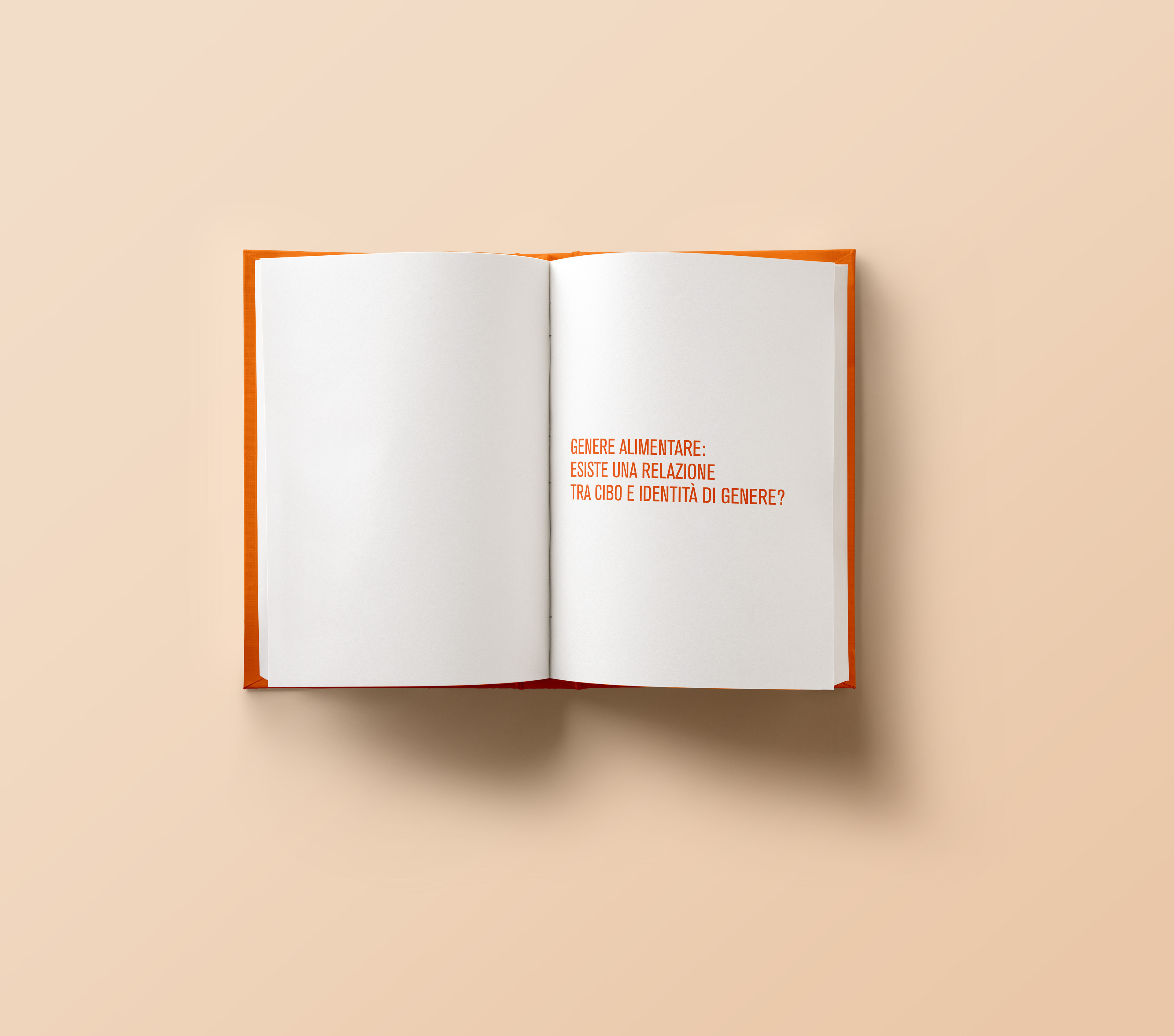
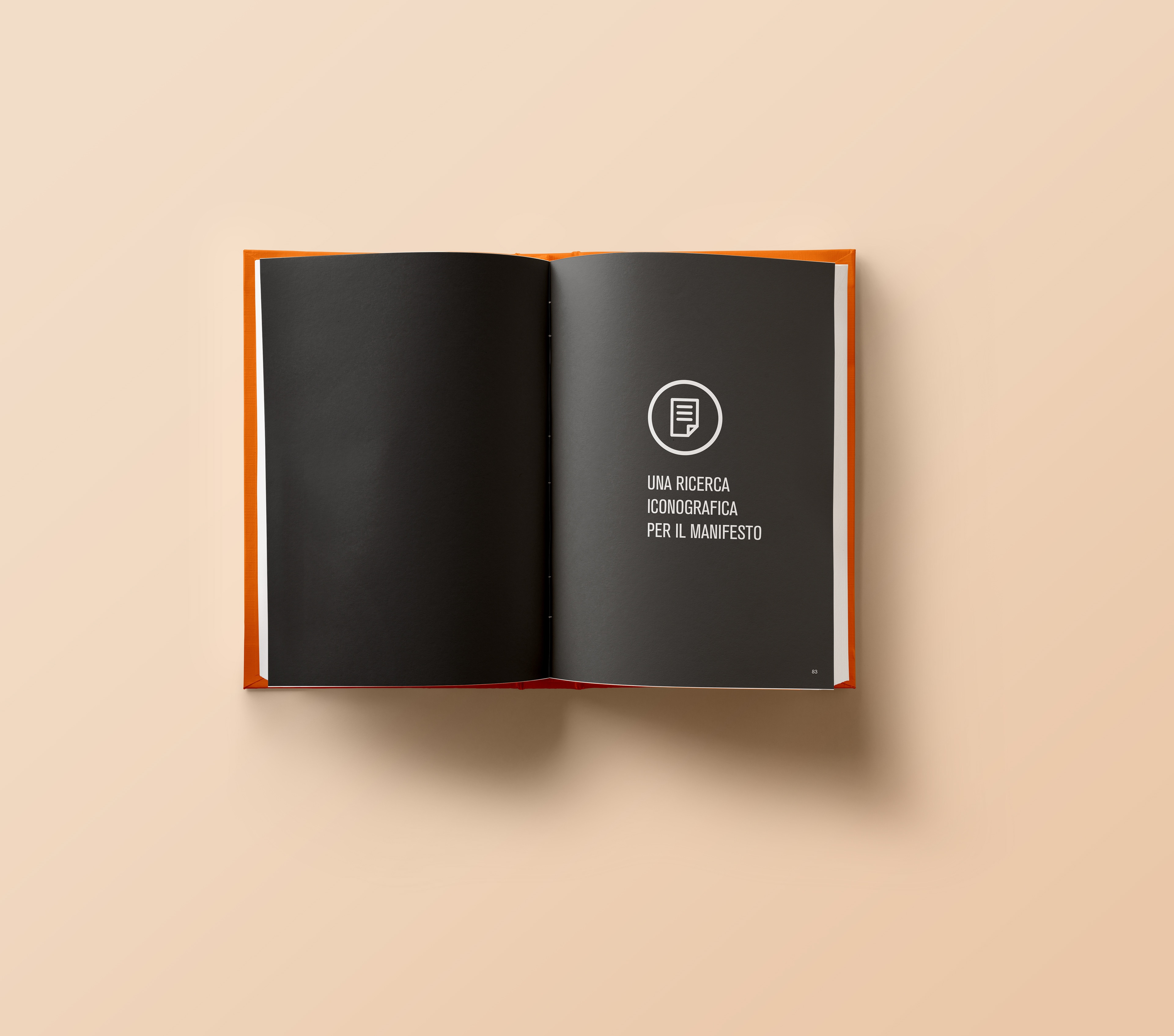
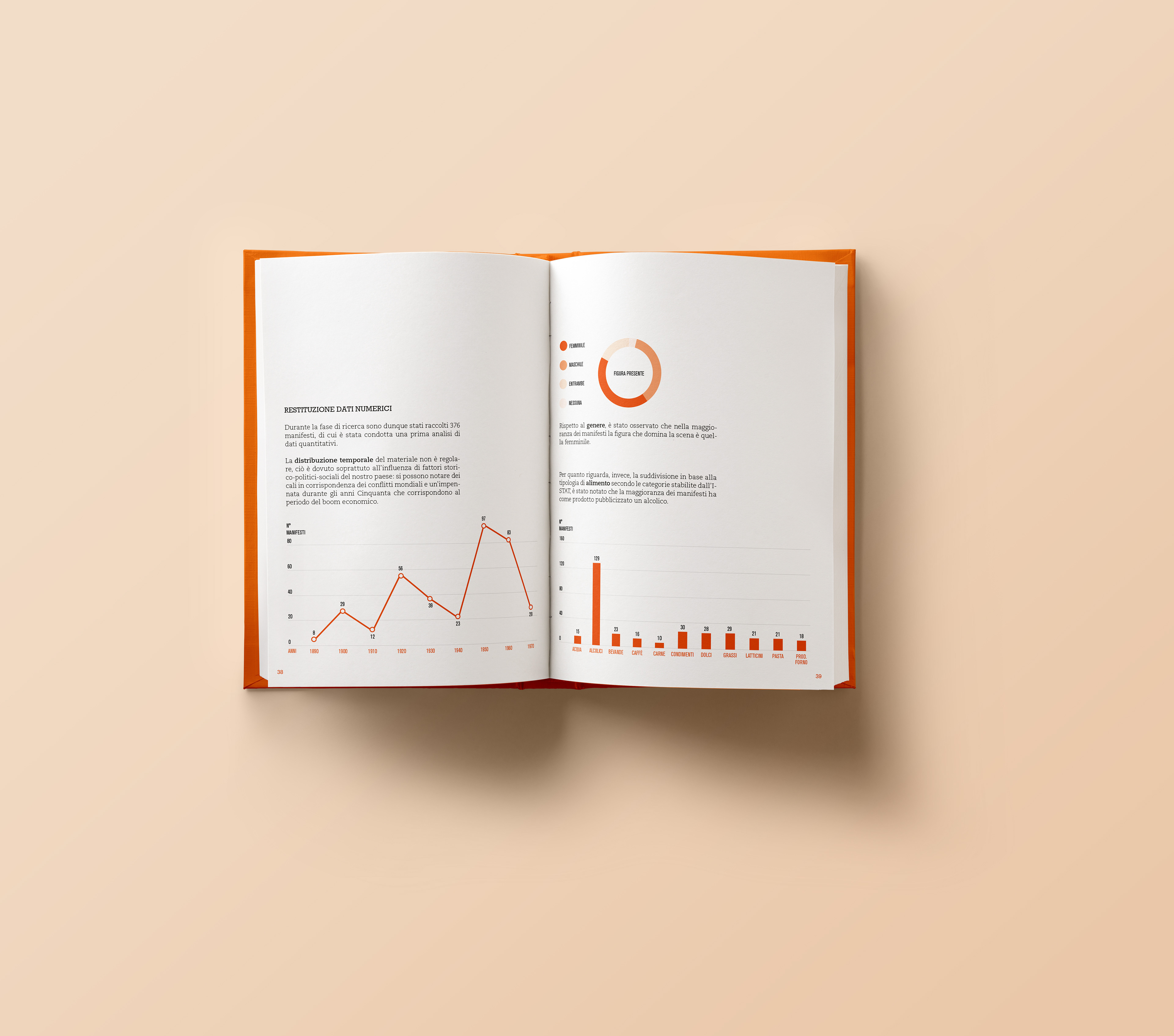
GENERE ALIMENTARE: ESISTE UNA RELAZIONE TRA CIBO E IDENTITÀ DI GENERE? Il progetto ha l’obiettivo di documentare come il particolare mezzo di comunicazione dei manifesti pubblicitari precedenti agli anni Ottanta racconti la relazione tra cibo e identità di genere. Per fare ciò sono state seguite numerose fasi: partendo con la ricerca e la raccolta dei manifesti, si è passati alla loro analisi e lettura critica, per poi elaborarne dei dati quantitativi e qualitativi e sviluppare un messaggio provocatorio rivolto al destinatario. L’intero progetto, e quindi l’insieme degli artefatti elaborati, è stato concepito per essere esposto in un’ipotetica mostra riguardante il tema trattato. GENDER FOOD: IS THERE A RELATIONSHIP BETWEEN FOOD AND GENDER IDENTITY? The project aims to document how a particular medium (vintage posters) stories the relationship between food and gender identity. To do this we followed several steps: starting with research and the collection of posters, we have moved to their analysis and critical reading, and then we elaborated the quantitative and qualitative data and developped a provocative message to the recipient. The entire project, and then all of the elaborate artifacts, has been designed for exposure in a hypothetical exhibition on the theme.













